At Laurel Avenue Primary School Maths is taught in accordance with the National Curriculum.
Our curriculum includes ‘Threshold Concepts’ (the ideas that shape pupils’ thinking), taken from Chris Quigley’s ‘Essentials Curriculum’ in each subject to track pupils’ learning through the Milestones. Each Threshold Concept is explored within different contexts so that it has tangibility and meaning. Breadth of contexts ensures that children gain relevant knowledge and can transfer this knowledge.
Threshold Concepts
Know and use numbers
This concept involves understanding the number system and how they are used in a wide variety of mathematical ways.
Add and subtract
This concept involves understanding both the concepts and processes of addition and subtraction.
Multiply and divide
This concept involves understanding both the concepts and processes of multiplication and division.
Use fractions
This concept involves understanding the concept of part and whole and ways of calculating using it.
Understand the properties of shapes
This concept involves recognising the names and properties of geometric shapes and angles.
Describe position, direction and movement
This concept involves recognising various types of mathematical movements.
Use measures
This concept involves becoming familiar with a range of measures, devices used for measuring and calculations.
Use statistics
This concept involves interpreting, manipulating and presenting data in various ways.
Use algebra
This concept involves recognising mathematical properties and relationships using symbolic representations.
Mathematics is delivered using ‘Little Big Maths’ and ‘Big Maths’ to develop and progress skills.
Children work through steps known as ‘Progress Drives’ where they follow a natural sequence of progression e.g. to know double 60 they need to first know double 6. Each step is always very small, but essential. This helps to boost confidence as all children can see that the next step up the progress drive is always easy and achievable. These Progress Drives allow for continuity and consistency across the whole school as all teachers are using the same steps of progression.
The lessons involve lots of repetition, revisiting and reinforcement to ensure solid knowledge of the basic and wider maths skills, constantly nudging children up the Progress Drives.
Basic Skills (CLIC)
Counting: Children learn to count forwards and backwards (progressing from whole numbers to ten through to counting in decimals and fractions) and to ‘count on’ from any number.
Learn Its: Recalling basic number facts including all four operations (addition, subtraction, multiplication and division)
It’s Nothing New: Children apply what they have learned to acquire new skills in a simple manner.
E.g. if they know 4 + 3 = 7, then ‘its nothing new’ to learn that 4p + 3p = 7p.
Calculation/Column Methods: Children use and apply facts and knowledge from CLI to all four operation calculation methods (addition, subtraction, multiplication and division) progress to formal written methods of calculation
Wider Maths (SAFE)
Shape: Explore and Draw; 2-D Shape; 3-D Shape; Position and Direction.
Amounts: Amounts of Distance, Mass, Money, Space, Temperature, Time, Turn.
Fractions: Fractions of a Whole and a Set; Fractions Learn Its; Fractions – Its Nothing New; Fractions Calculation; Percentages; Ratio
Explaining Data: Diagrams and Tables; Bar Charts, Lines Graphs; Averages; Pie Charts; Probability
(Dangerous Maths):Pattern Spotting; Algebra.
Big Maths Characters
Many of the It’s Nothing New concepts are introduced and taught using fun and interactive characters. This has proved to be a very powerful tool as the characters and the mathematical language that is associated with them is used consistently through the school and constantly referred to by both children and staff.
Each character helps children to learn and remember key principles that can be applied across a range of topics and difficulty.
E.g. Pim helps children make links between 3 + 4 = 7, 30 + 40 = 70, £30 + £40 = £70 and 0.03 + 0.04 = 0.07.
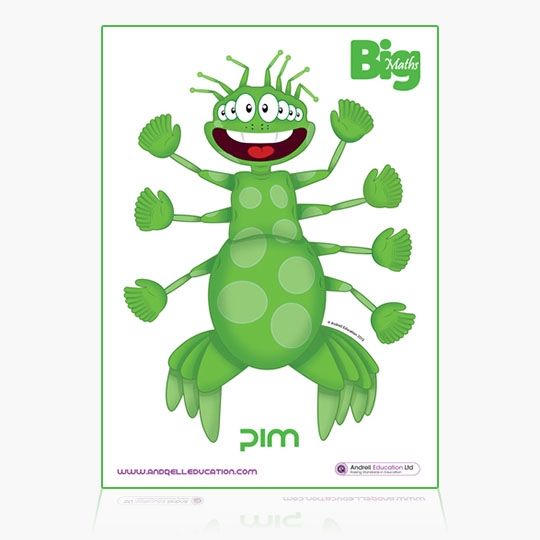
Pim
|
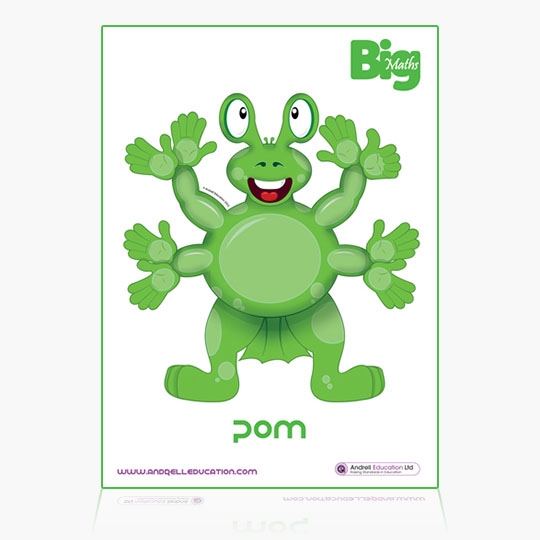
Pom
|
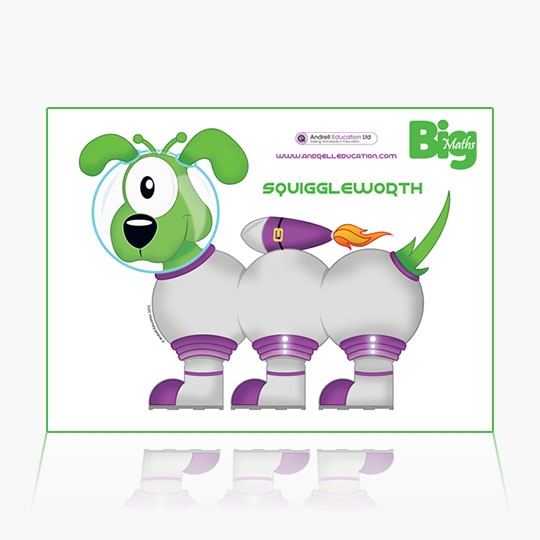
Squiggleworth
|
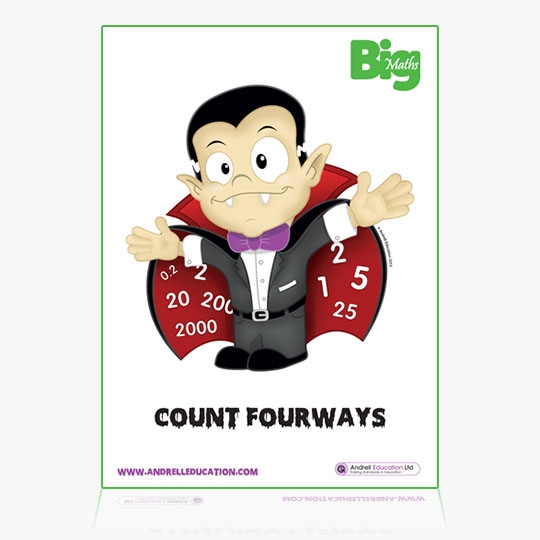
Count Fourways
|

Mully
|

Super Fab
|
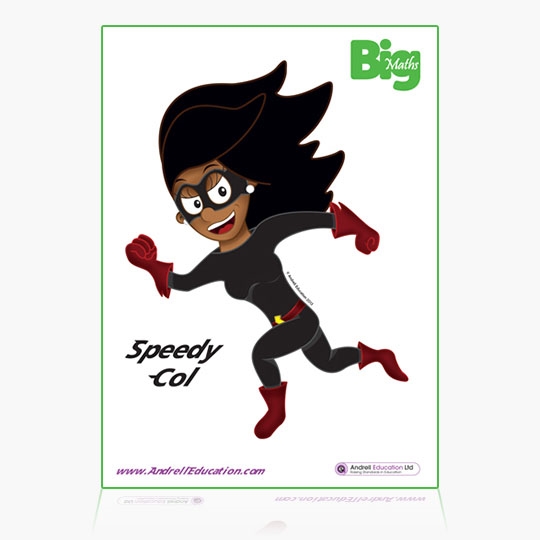
Speedy Col
|
|